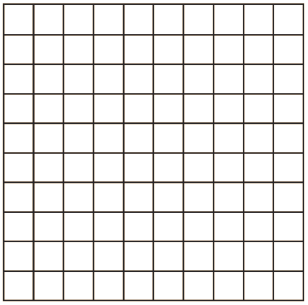Games provide a fun environment for supporting children in building number fluency. As children learn to play the games, speed should not be the focus. Encourage strategy and ask students to explain their thinking.
If students are experiencing difficulty with their computations they should be encouraged to work out the answer mentally or on paper. They should use whatever methods make sense to
them. At any time you should be able to ask how they know a numerical answer. The importance should be placed on how they communicate their thinking and the strategy that was used for the calculation.
Task Instructions
- Player A rolls a die two times. The first roll determines the number of rows and the second roll determines the number of squares in each row. Player A draws a rectangle that corresponds to the rolls in any location on the grid on the recording sheet, then writes the number sentence (for example, 3×4 = 12) in the rectangle.
- Player B rolls the die twice. Again, the first roll determines the number of rows and the second roll determines the number of squares in each row. Player B draws the rectangle that corresponds to the rolls in any location on the other grid, then writes the number sentence in the rectangle.
- Players take turns. Each rectangle drawn cannot overlap a previous rectangle. Each player continues until he or she is unable to place a rectangle on the grid. At that stage, the player records both the total number of squares covered by rectangles on the grid, as well as the number of uncovered squares.
Variation
After rolling the die twice to determine a product, the player can make any rectangle that covers that number of squares.
Materials
- One die
- Recording sheet for game (one 10×10 grid for each player)
Reference
From Helping with Math at Home: More Ideas for Parents. 2006. Portsmouth, NH: Heinemann.

